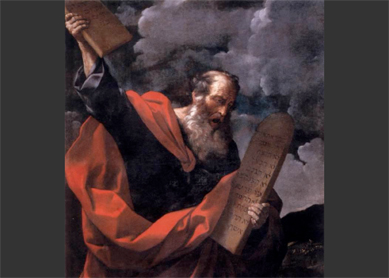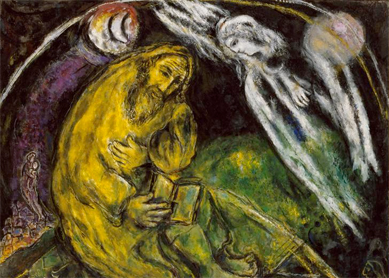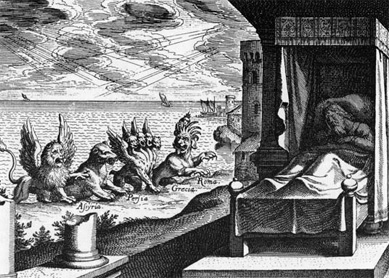How did ancient authors understand Miriam’s role as a prophet?
The Hebrew Bible contains numerous references to prophets who communicate between divine and human spheres. They encounter a divine revelation and later disclose it to their audience. Remarkably, only four women—Miriam, Deborah, Huldah, and Noadiah—are known as prophets in the Hebrew Bible. With regard to Miriam, the significance of the title “prophet” that appears in the feminine singular in Exod 15:20 has been disputed. In this passage Miriam leads women in celebrating the crossing of the Sea of Reeds. Some scholars have suggested that prophet is an honorific title and does not tell anything about the role Miriam actually had other than that she was a well-known and respected figure. In contrast to those views, various references to Miriam reveal that this figure was connected to a prophetic role. Therefore, the title should not only be interpreted as an honorific designation.
Two texts of the Hebrew Bible that shed further light on Miriam’s role as a prophet are Num 12 and Mic 6:4. In the first text, all prophets, Miriam among them, are juxtaposed with Moses’s unique role before God. Whereas all prophets would receive divine information through dreams and visions, Moses is known to speak with God face to face (Num 12:6-8). Moreover, the question that Aaron and Miriam raise “has he (God) not spoken through us also?” (Num 12:2) is nowhere denied and thus leaves open the possibility that God communicated to them too. Even more so, in Num 12:6-8 God directly addresses Moses, Aaron, and Miriam. Num 12 combines different narratives and contains various interpretative layers, but the way it is preserved to our time witnesses to Miriam being a character who communicated with God.
Meanwhile, Mic 6:4 makes use of Hebrew vocabulary that, independent of Exod 15:20 and Num 12, suggests a prophetic role for Miriam. First, the verb “to send” that appears in Mic 6:4 in the first person singular points to God, who speaks throughout the passage, as the subject. Hence, God has sent Moses, Aaron, and Miriam. The expression that the divine sends people appears frequently in the Hebrew Bible (see, e.g., in Josh 24:5, 1Sam 12:11, Jer 35:15, and Mal 3:2-3) and they have a function in fulfilling divine plans. Often the task of the people who are “sent” is to
declare and transmit God’s messages. Second, the preposition “before” specifies the motif behind why Aaron, Moses and Miriam are sent. The term “before” indicates power in front of the other Israelites. They go “before” because they exercise some kind of leadership in front of them. Whereas the leadership of Miriam, Moses, and Aaron is not specified in Mic 6:4, the notion that God sent them suggests for them a divinely appointed role. It is possible that the author had in mind the prophetic role, which assumes delivering God’s message to other people. The notion that God sent Miriam, Moses, and Aaron refers to the exodus period. It makes the audience recall the events of the Exodus and the role of Moses, Aaron, and Miriam in them.
Significantly, the texts of the Hebrew Bible are not the only sources attesting to Miriam as a prophet. Broader ancient Jewish literature also presents Miriam in such a role. Most notably, an Aramaic text, the Visions of Amram from the Dead Sea Scrolls, connects the figure of Miriam with raz (in 4Q546 12 4). In the Aramaic Jewish texts the term raz applies to secrets and mysteries and only selected people have access to them. People who accessed raz were known to be in touch with God. This narrative is unfortunately fragmentary and the readers do not know the contents of Miriam’s raz. Yet it indicates that belief in Miriam’s function as a divine communicator continued into later eras. Moreover, significantly, Miriam is the only known female figure who accesses raz, a category that is otherwise reserved for male figures exclusively.
Furthermore, a first-century CE text known as Liber antiquitatum biblicarum refers to Miriam’s dream vision. In this composition, Miriam has a dream that reveals to her Moses’s birth and his significance (L.A.B. 9:10). In this text Miriam is the only member of the family who is aware of Moses’s future role. The narrative detail, that people around her do not believe her prediction, highlights Miriam’s own importance as the person to whom God reveals Moses’s role. A similar tradition is preserved in the rabbinic literature, in b.Megillah 14a in which Miriam’s standing by the riverbank in Exod 2:4 is connected with her prophecy. In rabbinic texts, Miriam is remembered with Sarah, Deborah, Hannah, Abigail, Huldah, and Esther as one of the seven female prophets.
When one considers Miriam as a prophet one should take into consideration all of these texts and their portrayal of the figure. In light of them, the reference to Miriam as a prophet in Exod 15:20 is not a marginal reference. Further, it is not accurate to say that the title “prophet” was only an honorific designation. Rather, ancient Jewish literature provides strong evidence that Miriam was remembered as a prophet who operated in the exodus era.
Bibliography
- Gafney, Wilda C. Daughters of Miriam: Women Prophets in Ancient Israel. Minneapolis: Fortress, 2008.
- Tervanotko, Hanna. Denying Her Voice: The Figure of Miriam in Ancient Jewish Literature. JAJSup 121. Göttingen: Vandenhoeck & Ruprecht, 2016.
- Hamori, Esther J. Women’s Divination in Biblical Literature: Prophecy, Necromancy, and Other Arts of Knowledge. New Haven: Yale University Press, 2014.





